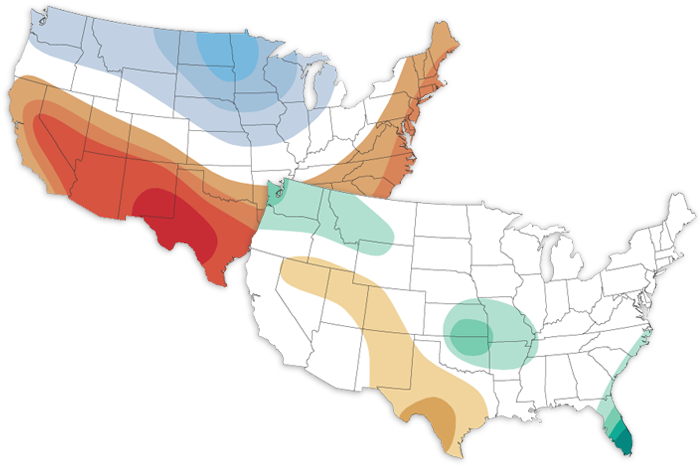
The June climate outlook favors a hotter-than-average start to summer for the southern and eastern United States and a cooler-than-average June for the north-central and northwestern U.S.
This summer’s western wildfire season is likely to be more severe than average but not as devastating as last year’s near-record, according to an experimental prediction method developed by scientists at the National Center for Atmospheric Research (NCAR).
NOAA Climate.gov's Tom Di Liberto was nominated for a regional (Chesapeake Bay region) Emmy award in the host/moderator/correspondent category at the upcoming Capital Emmy awards
During the 2022 Atlantic hurricane season, scientists at NOAA’s Atlantic Oceanographic and Meteorological Laboratory (AOML) will again help NOAA prepare the public for severe weather. They will also conduct new research on the complexites of how tropical cyclones form, develop, and dissipate.
Residents of Hawaii who've felt left out over the years as the ENSO blog has largely focused on the Lower 48, here's a post all your own.
Ongoing La Niña, above-average Atlantic temperatures set the stage for busy season ahead.
Tropical cyclones pull energy from the ocean surface, typically cooling the sea surface temperature at the same time. A new study finds that intense rainfall under a cyclone reduces the sea surface cooling.
Greenhouse gas pollution caused by human activities trapped 49% more heat in the atmosphere in 2021 than they did in 1990, according to NOAA scientists. Carbon dioxide remained the leading culprit, but other heat-trapping gases included methane and nitrous oxide.
NOAA’s Climate Program Office announces seven new projects for Fiscal Years 2022-2024 to develop model-based monitoring of key climate-impact areas. Totaling $2.7 million, the projects address coastal inundation, wildfire smoke, flash droughts, heat stress, and vulnerability to humid heat.
As electricity providers add renewable energy to their portfolios, a new study shows that more accurate wind forecasts generated by a NOAA weather model is saving the utilities—and consumers—big money.